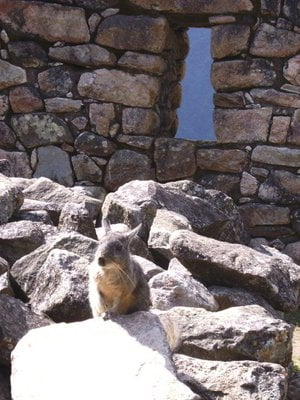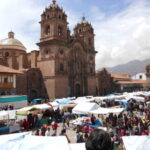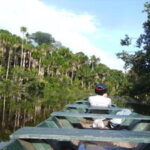People know Peru for Machu Picchu. But in addition to its famous ancient sites, Peru is also home to a surprising amount of unexpected wildlife. With a diverse geography that contains everything from a desert coastline to the Andean Mountains to the dense Amazon Rainforest, there are plenty of pockets for wildlife to thrive. Visitors with determination and a bit to time can see the following animals in Peru.
Penguins in Paracas
Ambitiously-named the “Poor Man’s Galapagos,” Peru’s Islas Ballestas can’t really compare with their greater and more famous northern neighbors. But with that caveat, these rocky isles just offshore Paracas make for an interesting day or weekend excursion from Lima. Over 150 different types of seabirds live in this protected reserve, including the Humboldt penguin. These penguins live along the coast of Peru and Chile and weigh about 10 pounds and are named after the cool and nutrient-rich Humboldt Current. Paracas is about 3 hours south of Peru’s capital and visitors can only explore the islands via a guided zodiac tour; no one is physically allowed on the islands. In addition to birds, Islas Ballestas are home to sea lions and other marine life.
How to see them: Take a guided tour as part of a larger travel package, or arrange a one-day marine wildlife tour from Lima yourself.
Flamingos in the Altiplano
There are actually three types of flamingos found Peru: the Andean flamingo, the Chilean flamingo, and the James’s flamingo, according to the Flamingo Resource Center. All live in the highland altiplano of central and southern Peru. This rugged region is rarely traversed by the typical tourist, so one of the most common places to see these long-legged birds is in the Salinas and Aguada Blanca National Reserve. The reserve covers 367,000 hectares and is located at 4,300 meters above sea level, conveniently midway between the colonial city of Arequipa and the famed Colca Canyon, both major tourist destinations.
How to see them: Rent a car or book a full-day taxi driver. Alternatively, keep your eyes open during a the standard drive between Arequipa and the Colca Canyon.
Anacondas in the Amazon
The green anaconda is the largest snake in the world, growing up to 29 feet long and weighing up to 550 pounds. Its habitat includes South American swamps and streams in the Amazon and Orinoca basins, including the area surrounding Peru’s Iquitos. Iquitos is an isolated jungle town, the largest city in the world unreachable by road. Home to numerous strange jungle creatures, including the pink river dolphin, Iquitos is probably the best base for Amazon excursions if you’re hoping to see and anaconda.
How to see them: The jungle is one place you can’t visit without a tour. To see these and other Amazon creatures in person, you can tour the jungle on various Peru Amazon tours.
Viscachas at Machu Picchu
In addition to impressive stonework and conflicted history, Machu Picchu is also home to the fuzzy viscacha, a rodent resembling a rabbit. Viscachas are most closely related to chinchillas and of the four types, three live in the Andes. With long ears and tail, viscachas are commonly seen along Inca Trail treks, and, despite the increasing popularity of Machu Picchu tours and excursions, still often spotted within the Machu Picchu citadel itself.
How to see them: Keep your eyes open while exploring the Machu Picchu ruins and tell your guide to help you find one.
Spectacled Bears in the Andes
The only bear in South America is shy with distinctive light colored markings around their eyes. Also called the Andean bear, spectacled bears have a wide-ranging habitat but prefer cloud forests. The bears are a threatened species with only around 3,000 left living in the wild, according to National Geographic, although they have been spotted by trekkers in the Peruvian Andes. Spectacled bears are primarily vegetarian and solitary, so hikers should consider themselves lucky-not threatened-if they happen upon one.
How to see them: Hike in smaller groups during treks through the Peruvian Andes. Inca Trail tours are the most popular, but you may have more luck doing an alternative trek with less people.





